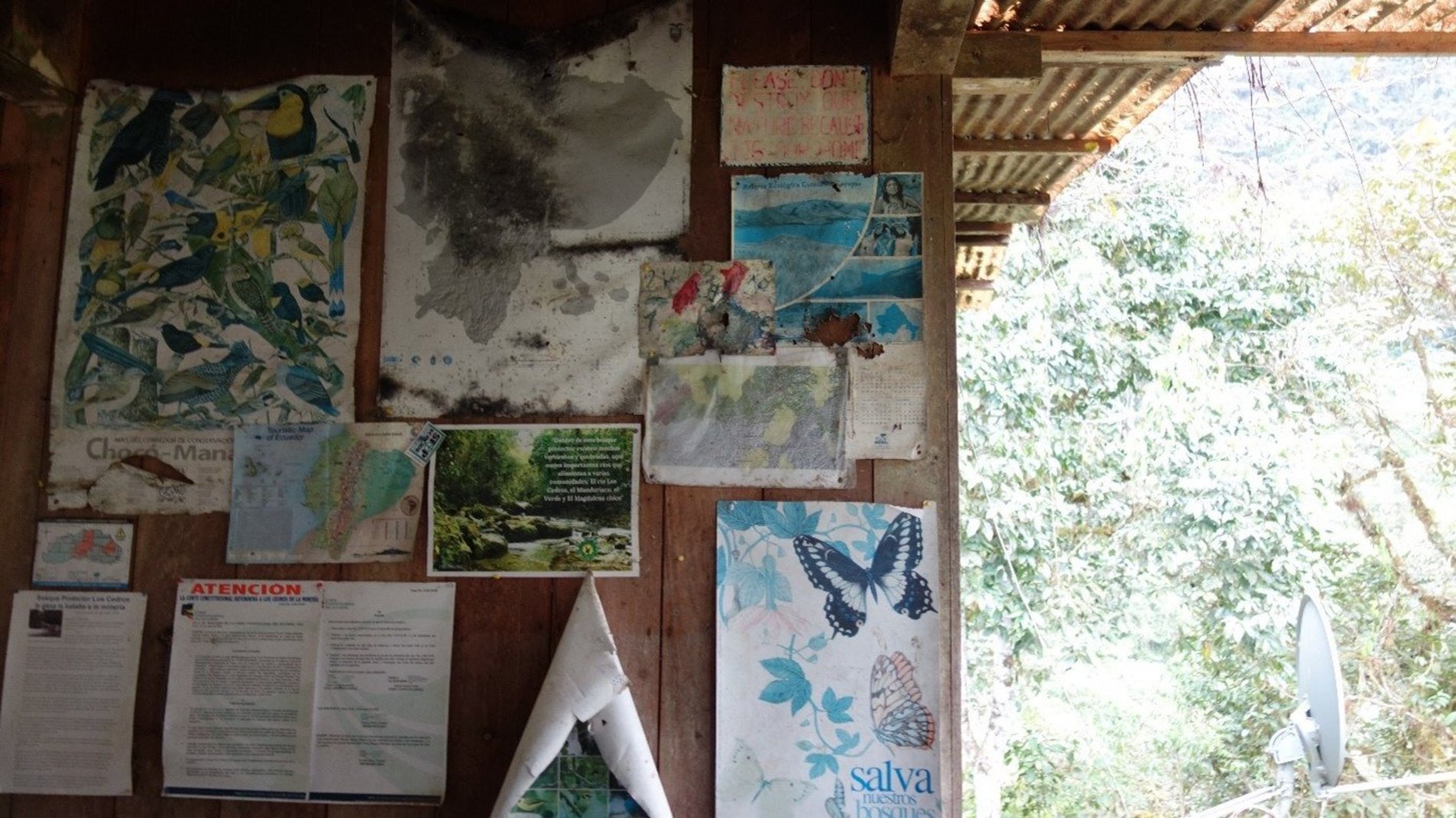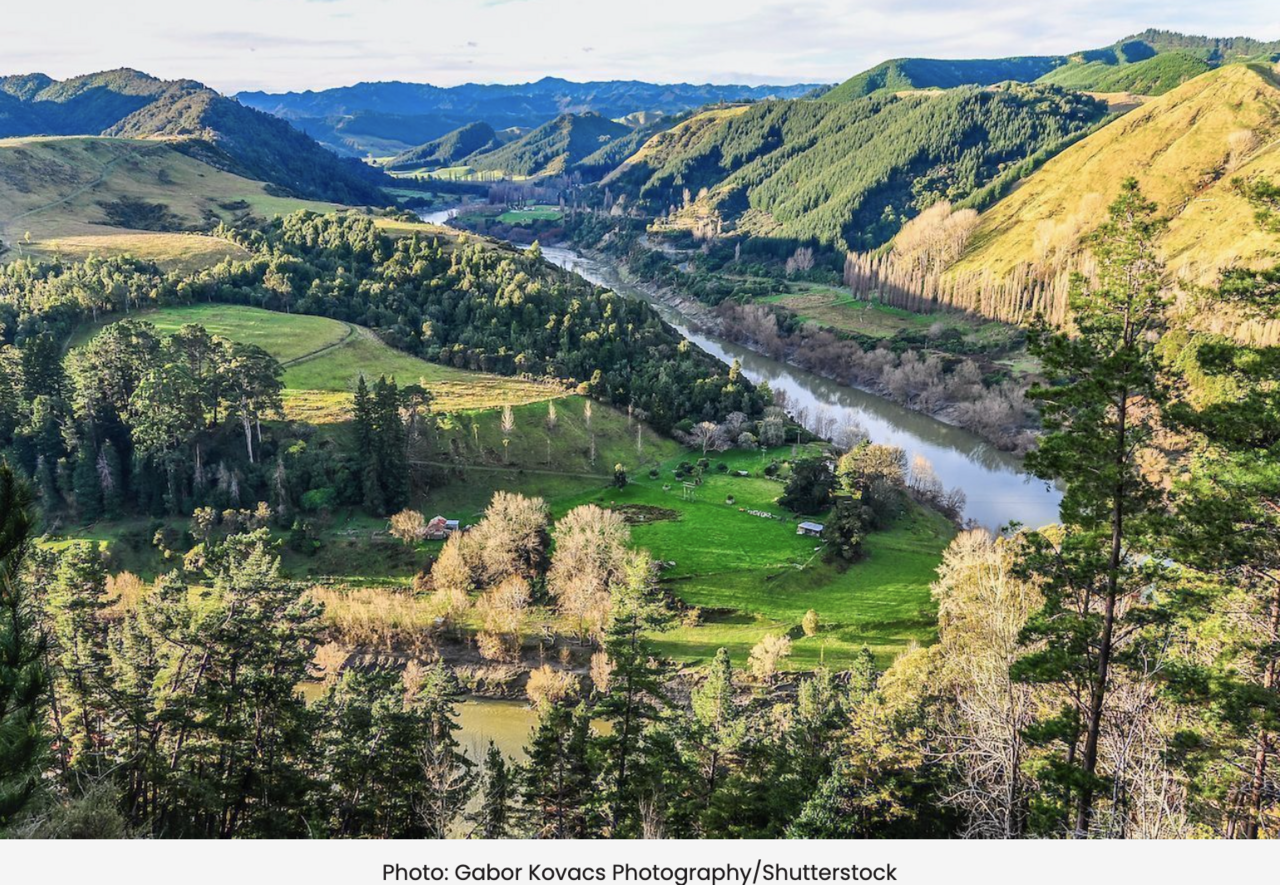The River as a Legal Person: The case of the Whanganui River in New Zealand
by Klaus Bosselmann and Timothy Williams
In 2017, New Zealand became one of the first countries in the world to grant rights to a river: the Whanganui River. We present five ways in which the recognition of the River as a legal person could help to shape law and policy.
In his seminal article Should Trees Have Standing, published in 1972, Christopher Stone argued that the current bifurcation of the legal world into persons and things is neither self-evidently correct, nor necessarily desirable. He noted that, for many centuries, women and slaves, for example, were not fully recognised as legal subjects, and identified a progressive widening of the law’s circle of concern. Stone proposed that “we give legal rights to forests, oceans, rivers, and other so-called ‘natural objects’ in the environment – indeed to the natural environment as a whole” and identified several good reasons for doing this. After all, he pointed out, the concept of legal personality is flexible enough for companies, ships and other corporate bodies to be recognised as rights-holders.
Aotearoa New Zealand has historically been forward-thinking when it comes to expanding the scope of legal rights and interests. In 1893, it became the first country to give women the right to vote. In 1991, it acknowledged the intrinsic value of ecosystems, a crucial conceptual foundation for the recognition that non-human natural entities can be rights-holders (see Resource Management Act 1991, New Zealand Public Act 1991 No 69, s.7.). In 1999, New Zealand was the first to establish a legal category of non-human hominids, and to place the legal focus on their best interests (a “non-human hominid” is defined as “any non-human member of the family Hominidae, being a gorilla, chimpanzee, bonobo, or orangutan”; see Animal Welfare Act 1999, New Zealand Public Act 1999 No 142).
In 2017 the New Zealand Parliament recognised the Whanganui River (Te Awa Tupua) as
“an indivisible and living whole, comprising the Whanganui River from the mountains to the sea, incorporating all its physical and metaphysical elements”.
The intrinsic value and cultural significance of the River has been recognised and it has been declared to have “all the rights, duties, and liabilities of a legal person” (Te Awa Tupua Act, New Zealand Public Act 2017 No.7, ss.13 & 14). So, does this herald a general recognition of rights of nature in Aotearoa New Zealand?
Predictably, the legal position is more complicated than this. The Te Awa Tupua Act must be seen in context. In Aotearoa New Zealand, as elsewhere around the world, rights of nature are intricately bound up with indigenous rights and interests. The Māori of the Whanganui River have an inalienable connection with, and a responsibility to, the River and its health and wellbeing – “Ko au te Awa, ko te Awa ko au: I am the River and the River is me”.
The Act is the result of Treaty settlement negotiations between the New Zealand Government (representing the Crown) and Whanganui iwi and hapū (the Māori tribal groups who occupied the Whanganui River region centuries before the arrival of European settlers). The purpose of the Act is to give effect to the Treaty settlement, and to address historical Māori grievances.
The legal personality of the Whanganui River is partly a mechanism designed to facilitate this; a “non-ownership” model enabling the settlement despite the conflicted question of legal ownership.
Many potential River rights can be imagined – an obvious example might be a right to a natural and unpolluted flow of water. However, a statutory limitation has been placed on the rights conferred by the Act on the River. While the River canhold “all the rights, duties and liabilities of a legal person”, the rights that the River actually holds are circumscribed not only by the nature of the River, but also by the existing rights and interests of others, and by various other statutory regimes that decide what those rights and interests are to be. The Act requires decision-makers to “recognise and provide for” or “have particular regard to” the new status of the River, depending on which statutory regime applies. This kind of language is commonplace under New Zealand’s Resource Management Act, which continues to govern consent processes affecting the River.
In some senses, the Act is quite conservative and orthodox. So, what is the true significance of the recognition of the Whanganui River as a legal person in Aotearoa New Zealand?
Ownership and governance
Firstly, the method of decoupling questions of ownership and governance is innovative and may prove to be a useful precedent in other circumstances where intractable disputes over property rights are creating an obstacle to achieving good governance.
Moving beyond human ownership, and the legal and societal baggage that comes along with that concept, provides us with an opportunity to reframe our relationships with each other and with the land itself.
As the River’s intrinsic interests are promoted, our understanding of our own rights and obligations, and of the duties and constraints on public authorities, are likely to change. This opportunity for change is likely to be most valuable where ecosystems of outstanding importance are concerned. It is easy to see how an intractable dispute over ownership of a hugely significant ecosystem can result in the need to reframe property rights while protecting and promoting the interests of the ecosystem itself.
Indigenous worldviews
Secondly, the legal personality of the River is predicated on the recognition of a Māori world view (te ao Māori), which acknowledges the interconnectedness and interrelationship of all living and non-living things. Te ao Māori recognises that we are in a kinship relationship with our environment, rather than the environment merely providing the physical context in which relationships occur. Recognising the River as a legal person implies a legal recognition of this kinship relationship.
In this way, it also facilitates the progression of law from an atomistic, mechanical, paradigm to an ecological one, in which we fully acknowledge the importance of systems and accept that our legal duties can extend beyond only respecting the interests of other human beings.
Processual learnings
Thirdly, there is the place-based and deliberative process which has been established in order to identify the interests of the River, and to develop a strategy to promote and protect the health of the River. This deliberative process brings together people and organisations with a close connection to the River, who are legally mandated to act collaboratively to advance the health and well-being of the River.
Although certainly not unique to a legal personality model of governance, this place-based and deliberative process is an indispensable element of the legal personality model as it is being developed in Aotearoa New Zealand. Whether the Act can truly be said to give a voice to the River will depend on whether its co-governance structures and processes work effectively, and whether the outcomes of these processes are respected and implemented.
River rights
Fourthly, there is the question of which specific River rights will be recognised by the New Zealand courts as legal rights, and how these will be enforced. The recognition that the River has its own intrinsic value and its own interests, which can be protected by legal rights, fits squarely within mainstream rights-theory. New Zealand is a common law country, and it appears that common law remedies based on trespass and nuisance should be available to the River in appropriate circumstances. It remains to be seen how specific issues will be addressed as they arise, and there is not enough space here for detailed speculation. However, one important feature of legal rights which is worth noting is that, once recognised, they can be cross-cutting, reaching out beyond the confines of a statutory regime.
Despite the statutory limitation on the rights of the River, referred to above, there is certainly now potential for disruption of the status quo where the River’s interests are at stake.
The river’s human face
Finally, there is the crucial role played by the office of Te Pou Tupua – “the human face” of the River. This office comprises two persons, one appointed by the government and one by Whanganui iwi, and it brings together all the themes identified above. It is Te Pou Tupua that must speak for the River and enforce its rights where necessary. In doing so, it will need to bridge the ontological and normative gaps between Crown and Māori, and between the different elements of our civil society, while maintaining its primary role of protecting and promoting the physical and spiritual health of the River. This work is strongly reminiscent of the Earth Charter, with its language of a “sacred trust”, and its call for government, civil society and business to work together in partnership to build a sustainable global community.
There are many threats facing the River, and many issues are yet to be resolved. However, the river as a legal person in Aotearoa New Zealand embodies an exciting synthesis of ecological jurisprudence and tools for achieving better environmental governance and practical outcomes.
In the words of Christopher Finlayson, who as the Minister of Treaty Negotiations had promoted legal personhood for the River in the Tūhoe and Whanganui River settlements and the subsequent Te Awa Tupua Act:
“It is easy to get disheartened by some of the environmental problems confronting us in 2020. But we have two options: get apocalyptic or do something. Looking to expand the rights of nature into new fields could be one solution. It’s an area where the New Zealand experience could help lead the way.”
This piece is the adapted version of a book chapter that first appeared in: Sergio Augusto Ribeiro and Vera Lessa Catalao (eds.), Water, Sharing and Peace Culture, International Center on Water and Interdisciplinarity, Brasilia, 2020.
Klaus Bosselmann is Professor of Law at the University of Auckland, New Zealand. He is Chair of the Ecological Law and Governance Association (ELGA) and until recently headed the New Zealand Centre for Environmental Law.
Links & Literature
- Earth Charter, preamble: https://earthcharter.org/library/the-earth-charter-text
- Klaus Bosselmann (2017). The Principle of Sustainability: Transforming Law and Governance. New York: Routledge, New York.
- Klaus Bosselmann & Prue Taylor (2017). Ecological Approaches to Environmental Law: Research Collection. Edward Elgar Publ.
- Christopher Finlayson (2020): “Internationally hot, domestically not: New Zealand and the Global Rights of Nature Movement.” New Zealand Centre for Global Studies 3. nzcgs.org.nz/blog- zoo/item/internationally-hot-domestically-not
- Katherine Sanders (2018): “‘Beyond Human Ownership’? Property, Power and Legal Personality for Nature in Aotearoa New Zealand.” Journal of Environmental Law 30, 207–234.
- Elizabeth Macpherson (2019). Indigenous Water Rights in Law and Regulation: Lessons from Comparative Experience. Cambridge University Press.
- Christopher Stone (1972): Should Trees Have Standing? and Other Essays on Law, Morals, and the Environment.
- Olivia Woolley (2014). Ecological Governance: Reappraising Law’s Role in Protecting Ecosystem Functionality. Cambridge University Press.


